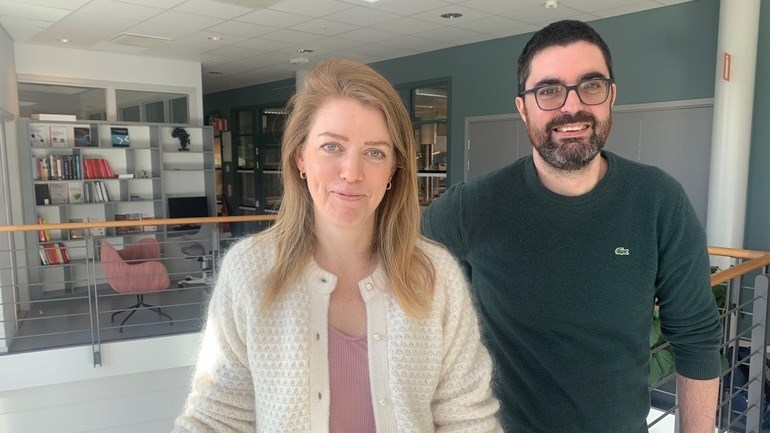The joys of researching next door to two world-renowned largescale facilities

Emelie Nilsson and Andrea Scotti are both researchers at Biofilms Research Center for Biointerfaces at Malmö University.
Two academics have high expectations of two largescale research facilities in the Öresund region. Emelie Nilsson and Andrea Scotti, both researchers and university lecturers at the Department of Biomedical Science, have a shared interest in utilising the powerful X-ray at MAX IV and the world’s most powerful neutron source at ESS.
The potential of these sites was discussed at the Biofilms Research Center for Biointerfaces (BRCB) at its annual workshop. The theme this year was, Advances of research in the area of biofilms, biobarriers, and biointerfaces: cancer environments, host-pathogen interactions and large-scale facilities.
Scotti is a physicist trying to understand why soft materials behave and react the way they do.
“The macroscopic properties of soft materials are determined on a much larger length scale than hard materials. These characteristic lengths can be measured by X-ray and neutron scattering or neutron reflectometry which are the techniques used at the MAX IV and, soon, at ESS facilities respectively. Depending on how the beam is scattered when it hits the material, you get information about the material's internal structure,” he says.
According to Scotti, knowledge of soft materials can be useful when you want to reconstruct and create synthetic tissue or nerves. But also to understand biological fluids such as blood, which is a complex fluid containing several soft particles. If we understand better how blood flows, it increases the possibility of creating a synthetic blood prototype that can be used to test new drugs.
“We are in a unique position here in Malmö with two of the world's most modern facilities when it comes to diffraction. Through ESS and MAX IV, we can produce results that complement each other in a very useful way.”
Nilsson examines the structures of pharmaceutical binders and biological tissue, such as skin and mucous membrane, to see how they affect the dissolution and permeability of the materials.
“We have already made a couple of measurements at MAX IV where we have looked at the structure of both skin and mucous membrane. We have our own X-ray equipment in the lab, but the big difference is that the source is so much stronger at MAX IV. So something that can take two days here in the laboratory can take five minutes there,” she says, and continues:
“In addition, we can irradiate smaller parts of the material and work with smaller sample volumes because the beam can be focused on a small surface.
“I have been looking forward to ESS ever since I studied at the university when it started to be planned. Being able to use it in my research is a huge advantage,” says Nilsson.
Text: Magnus Erlandsson & Adrian Grist